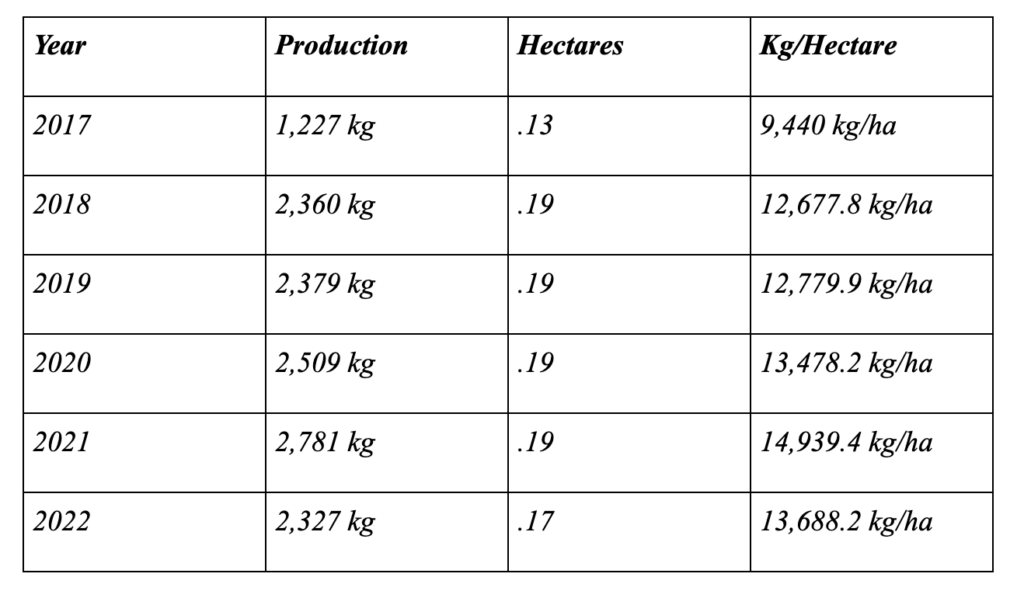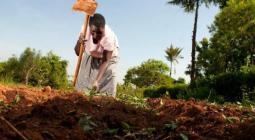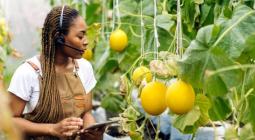Veganic Farming: How My Tiny Plot Produced 5,000 Pounds of Food Without Using Manure

Veganic agriculture is the food revolution for the modern world.
Is it possible to grow food without exploiting animals in gardening/homesteading and farming systems? Even if we do not keep domesticated animals, isn’t it necessary to at least use animal manure? The veganic way of growing shows us that not only is it possible to grow fruits, vegetables, and herbs without manure but it is also productive, ecologically sustainable, and regenerative for our rapidly depleting agricultural soils.
Veganic Farming: Definition
Veganic farming is the growing, gardening, cultivation, and production of food and fiber crops with a minimal amount of exploitation of animal and plant species. Veganic methods use no animal products or byproducts, such as blood meal, bone meal, manure, urea, fish meal, fish emulsion, or any other animal-originated matter, because the production of these products either harms animals specifically or is connected with their subsequent suffering.
Furthermore, while “organic” cultivation allows for the use of organo-pesticides, fungicides, and herbicides and conventional cultivation uses all manner of chemical toxins, veganics does not do so as applying and spraying these poisons highly disrupt the native floral and faunal balance of the growing systems and is against the main philosophy of this form of agriculture of cultivating for the benefit of all beings.
Veganic growing is an important step to ensure that we break the chain of animal agriculture in our farming systems. Adopting this approach has become increasingly important given the negative impact large-scale animal farming has on our environment.
The idea behind veganic farming might sound good in theory, but do these models exist and are they sustainable?
La Ferme de l’Aube Veganic Farm
In 2014, Mélanie Bernier and I established La Ferme de l’Aube with a vision of what could be possible to grow veganically and productively for all beings to share. We created a small micro farm/homestead on less than half-acre of space on our six-acre property with the intention of letting the rest rewild.
The farm focuses on:
Soil Building
We strive to increase soil organic matter (SOM) using plant-based composts and green manures (cover crops), including buckwheat, clover, and oats. We cover the soil in winter by allowing all garden plants and native flora to freeze and rest on the low or no-till permanent beds. Two soil tests comparing soil organic matter and soil organic carbon (SOC) were taken in 2016 and 2022, respectively, and revealed a 38.46 percent increase in the presence of these components in the soil samples.
Here are the results:

SOM = Soil organic matter
CEC = Cation exchange associated with nutrient availability in soils
pH = power of Hydrogen is the relative acidity/alkalinity of soils (7.0 = neutral)
SOC = soil organic carbon directly related to the ability of soils to sequester carbon
Diversity of Plantings
We cultivate more than 400 varieties of fruits, vegetables, herbs, flowers, shrubs, and trees. Through these annual and perennial plantings, we seek to invite a biodiverse faunal realm of insects, birds, reptiles, amphibians, and animals.
In 2018, we conducted a farm-wide biodiversity study to obtain a better understanding of the inhabitants living on the land. The results were impressive.
- More than 120 bird species were observed with more than 50 breeding on-site
- 15 species of reptiles and amphibians
- 25 species of mammals
More than 150 species of spiders, butterflies, bees, beetles, and other insects were also found on the farm, but this was only scratching the surface as many more were undocumented due to my lack of training, and not for the lack of them living here.
In August of 2018, a bumblebee point count observed 80 individuals. In 2022 that population grew to 182, an incredible 228 percent increase. There were six endangered monarch butterflies in August of 2018. In August 2022, 25 were observed, the highest number recorded on the farm. All indicators in 2022 pointed to the fact that all faunal numbers had increased.
This data proves to us that cultivated diversity and rewilding are improving the ecosystem for all residents and migrants. For the monarchs, we made a concerted effort to rewild vast milkweed patches along with those growing in our cultivated gardens, which is the plant necessary for the monarch’s survival.
Food Production for Humans
Food production for human consumption began in earnest in 2017. In five years, the total production grew from 9,440 to 13,689 kilograms per hectare—a 45 percent increase.
Total recorded production from 2017-2022

From 2018 onward, the farm provided nourishment to 40 families per week for 15 weeks and eliminated a food desert in our region. It provided us with a year-round food supply as well.
All this was being done with almost no waste; it amounted to a mere 1 percent of post-harvest production. Because it just seemed to make sense, we created a thriving artisanal seed company specializing in open-pollinated and heirloom varieties.
We felt that the production was so exceptional that I initiated a study in December 2018 in cooperation with the Humane Party, the first vegan, abolitionist political party in the United States, comparing veganic to conventional and organic agriculture methods. We found that veganic was 3 percent more productive than conventional and 41 percent more productive than organic agriculture, respectively. Further, when comparing vegan agriculture to the best animal agriculture model, it was found to be more than 4,000 percent more productive, acre per acre.
The Agricultural Revolution Is Veganic
As gardeners and farmers, we can make a difference with every planting season by practicing solid, ecological, and veganic principles. Revolution in agriculture is on our doorstep.
We can change how we treat our “Earth Mother” with every action. All inhabitants on this planet deserve life and the right to live as they see fit. Once we learn that we can grow efficiently, productively, and compassionately, while keeping the welfare of all beings in mind, we can begin to see the way forward in adopting these sustainable practices as alternatives to animal agriculture.
This article was produced by Earth | Food | Life, a project of the Independent Media Institute.
Jimmy Videle is the author of The Veganic Grower’s Handbook: Cultivating Fruits, Vegetables, and Herbs from Urban Backyard to Rural Farmyard (Lantern Press, 2023) and the co-founder of NAVCS-Certified Veganic.





